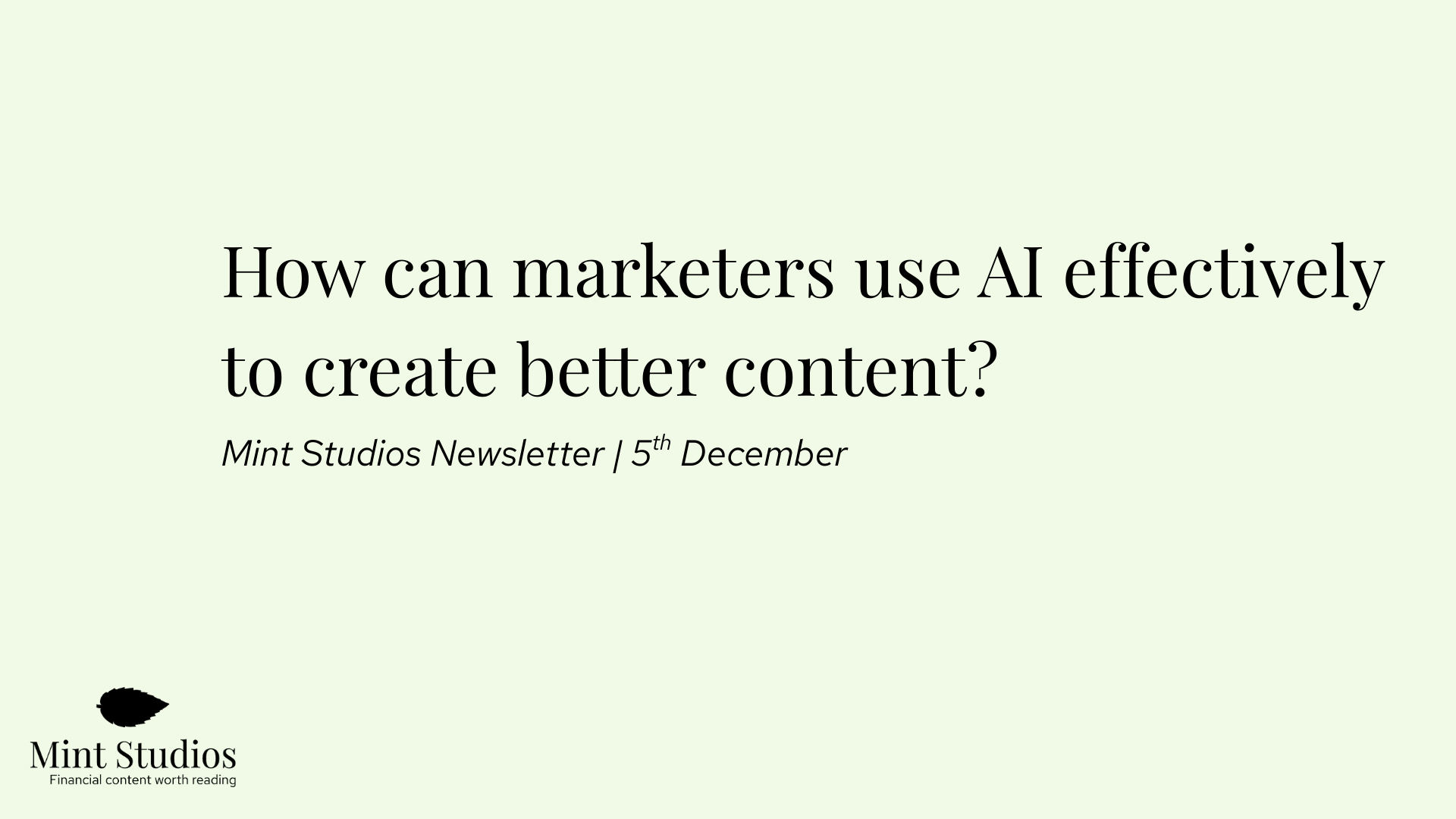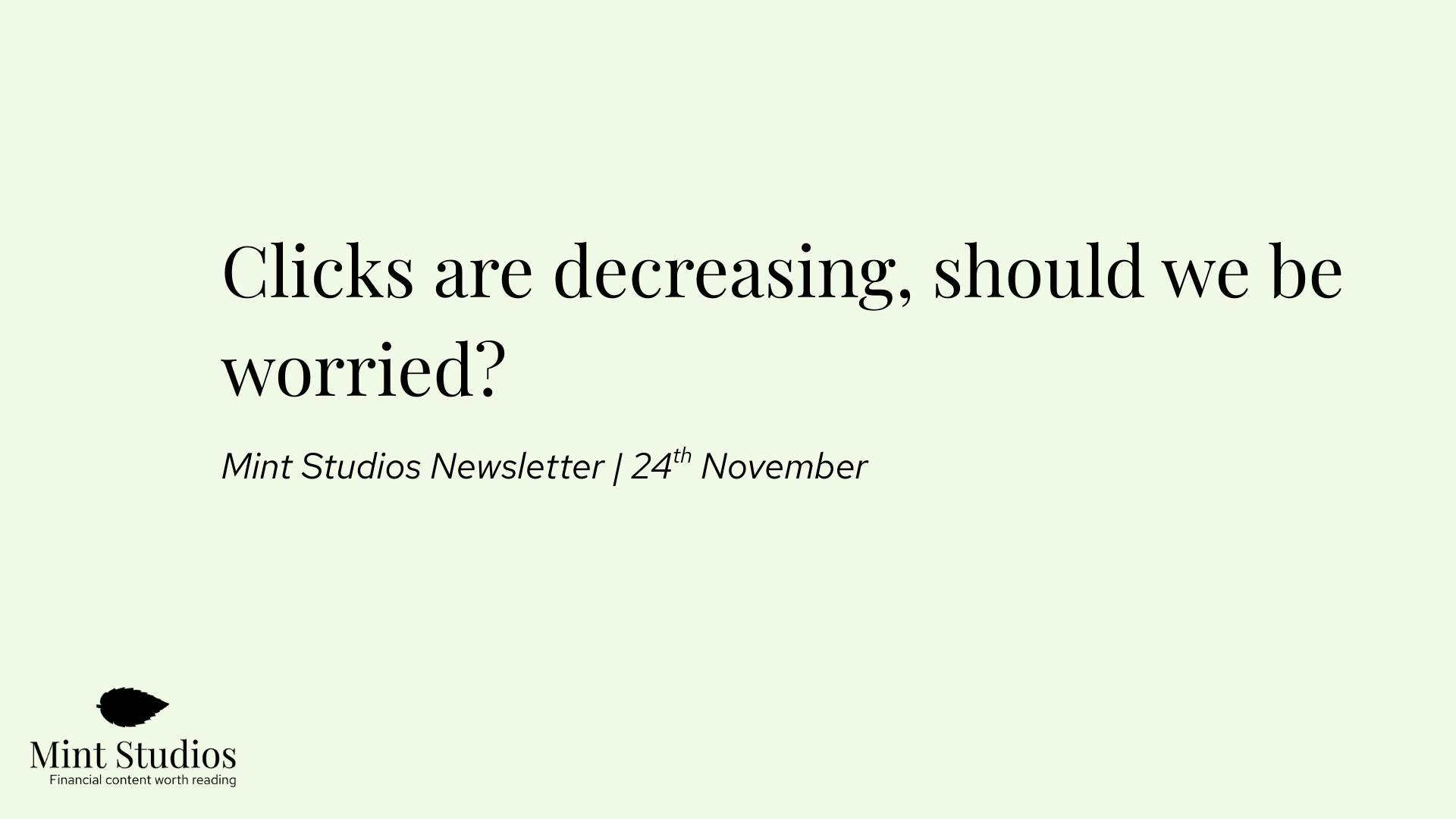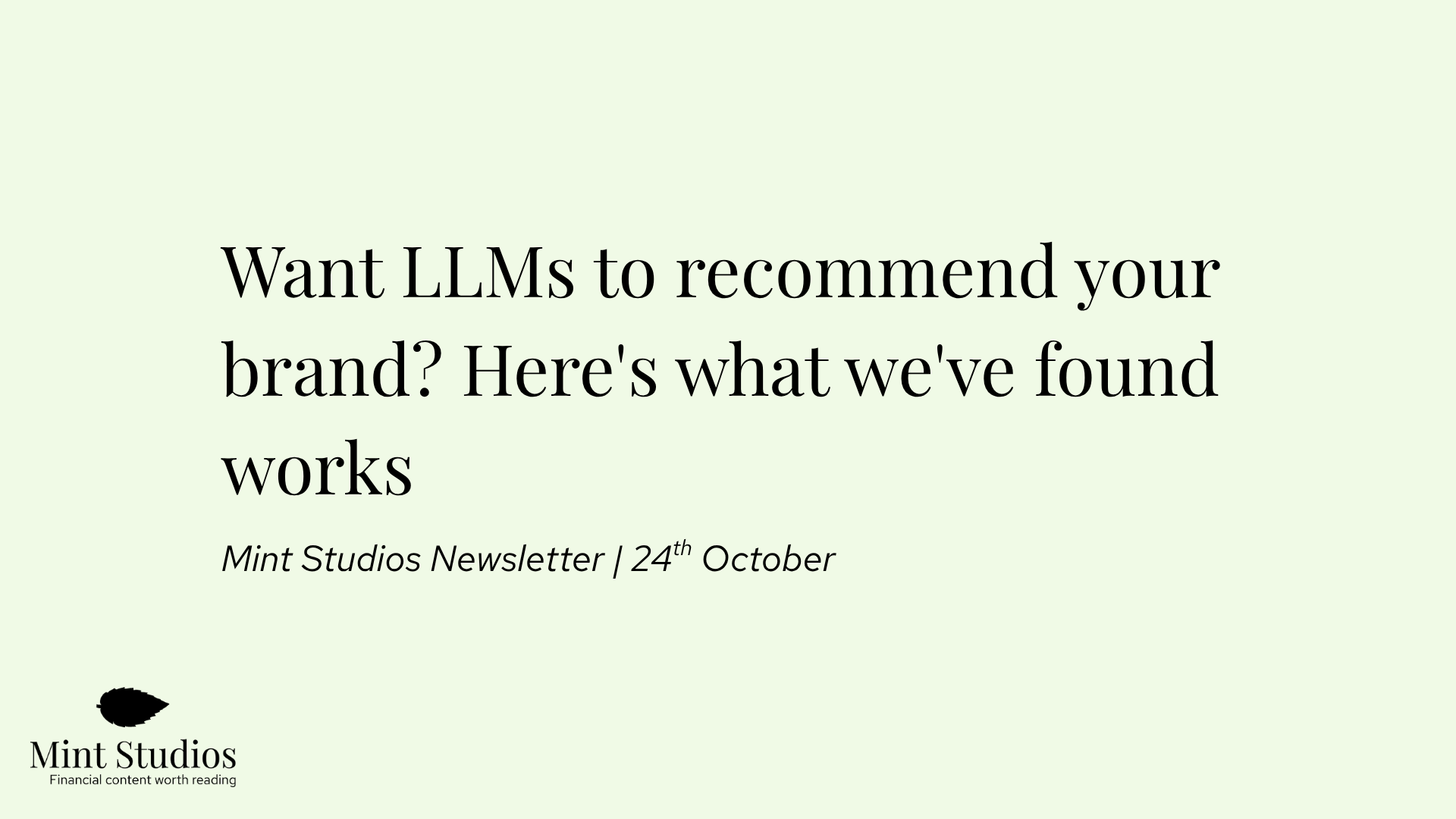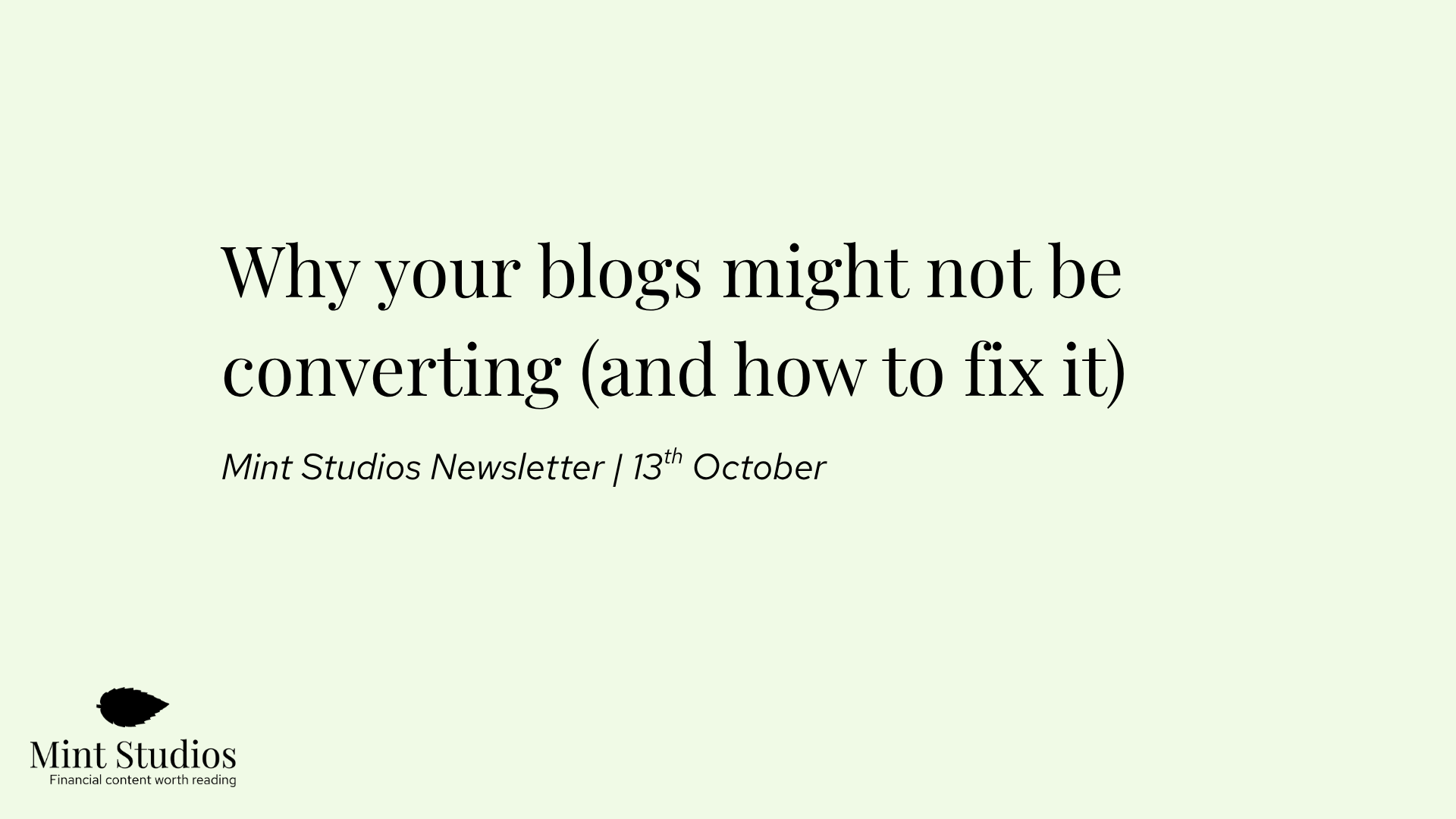Based on our experience running a fintech marketing Slack group, speaking and attending conferences, running a fintech marketing podcast and a marketing agency, we believe this to be the ultimate truth in B2B marketing:
In the B2B world, the most effective marketing medium is sharing expertise.
When it comes to high ticket purchases, it all comes down to trust. And what’s the best way to build trust before the sale? By sharing expertise and establishing yourself as the trustworthy expert.
If you’re reading this, it’s likely you’re looking for inspiration for B2B fintech marketing tactics or strategies that have worked well for others and have successfully helped other fintech companies share expertise and establish themselves in the market.
In this article, we’ll be going through a few fintech marketing tactics and fintech companies that seem to be doing a good job with their marketing.
Note: we believe one of the best ways to share expertise is with expert-based content. Learn more about our framework that helps fintech companies use content to acquire customers and establish themselves as experts.
Top B2B fintech marketing tactics with examples
Written content marketing
Content marketing is playing an increasing role in the B2B fintech marketing sales for a few reasons:
- If you’re targeting small to medium businesses, there’s a lot of education required to help them understand how payments work.
- For the consultative sale, more buyers are wanting to do their own research and educate themselves before reaching out to a salesperson.
- Content is one of the most effective ways to share expertise and establish yourself as the trusted expert.
We’ve been doing work with payment infrastructure companies, and we know that targeting very specific keywords like “intelligent payment routing” and “faster payments api” is bringing in highly qualified customers.
Read more about our approach here: Can Blog Content Bring in SQLs for Enterprise B2B? Yes, and Here's How
When it comes to content marketing for B2B, most fintech companies do it wrong, and there’s an opportunity to do much better content. What they do wrong is:
- Most B2B content is for beginners. They start off with “what is an API” and defining terms that a product manager or Head of Payments would already know. See below for example:

- Most B2B content is not designed to convert. In the B2B payments world, it makes no sense to “write for your grandma” or “write for a 5 year old”. You’re writing to get customers, and your target market is not a grandma or a 5 year old. You’re also not writing to entertain. No one (except those in the industry) reads payment content for pleasure. Get to the point and don’t try to entertain.
- Most B2B content is not based on expertise. A lot of companies outsource their content to a freelancer who knows nothing about the product, the market or the customer. Instead, they write content that is essentially rephrased or recycled content from Google or white papers, and they call it “thought leadership”. This won’t position your company as an expert and it won’t turn your readers into customers. It is essentially a waste of money.
There’s a large opportunity to write B2B content that is:
- Advanced and based on expertise.
- Written for the target audience, not beginners.
- Designed to attract customers, not to entertain.
With this approach via our four pillar framework, we’ve helped payment and B2B fintech companies acquire customers worth $60k and above. Read this article to learn more: How Many Leads Can You Generate with Content Marketing?
Examples of companies that are doing content well:
Webinars
Webinars and virtual events are an untapped area when it comes to B2B fintech marketing, especially when it comes to complex payment topics. The most common issue we hear is: what do you do with the attendees once the webinar is over? How do you turn attendees into customers?
It’s not easy to find companies who are doing a good job at this, especially in the B2B sector. However, 11FS, a financial services consultancy, have gone full on with virtual events – especially during Covid. They did:
- LinkedIn Lives
- Webinars/virtual events
- Live Youtube videos and more
You can check their Youtube channel to see those in action: 11FS Youtube channel
If there is one social media platform that makes sense to invest in as a B2B fintech company, it’s LinkedIn. Pretty much every B2B fintech is on there, and when done correctly, it can produce huge returns.
One great example of a company doing this is Tilled, a payment facilitator. In our case study (coming soon), Caleb, the founder, breaks down in detail how he went from 500 to 12,000 LinkedIn followers.
By sharing advanced technical content and being authentic, LinkedIn has become one of the primary drivers for leads and deals for Tilled. In fact, 95% of the 150+ deals they got in 2022 came inbound, with a majority coming from LinkedIn.
If you want to master LinkedIn, make sure to look at what Caleb is doing: Caleb’s LinkedIn.
Free tools
If you’re a B2B Fintech that can build software or widgets, offering free tools is a great B2B marketing tactic.
People (and businesses) love free tools. It’s a great way to add value and acquire a loyal customer in return; you’re offering something so a customer can do something they couldn’t do before - for free!
It’s mostly B2C Fintechs that offer free tools, however there may be an opportunity for a B2B Fintech to offer tools as well. Most of the B2B free tools we find in Fintech are using a freemium model:
- Chaser: Freemium model
- Float: free software until you add a client
- TrueLayer: free demo + console
- Square: free team management software
The other bonus of offering free tools is that it’s a great way to gather backlinks to a website. As people link to your free tool and recommend it to others, your website gains authority and is more likely to appear on the first page of Google — that’s a triple win for everyone!
The other thing to mention is that this marketing tactic is not as saturated as others, so you’re more likely to stand out.
Email marketing
Practically all B2B fintechs will be engaging in email marketing – the data says it’s effective, however in our panel event last year opinions were divided.
Watch the panel:
It’s hard to find an example of a fintech company doing a good job at email marketing, since we’re not really their target market and haven’t been on the receiving end. When asked for examples of companies doing this, Cognism comes up as a company that’s doing a great job (although they aren’t fintech).
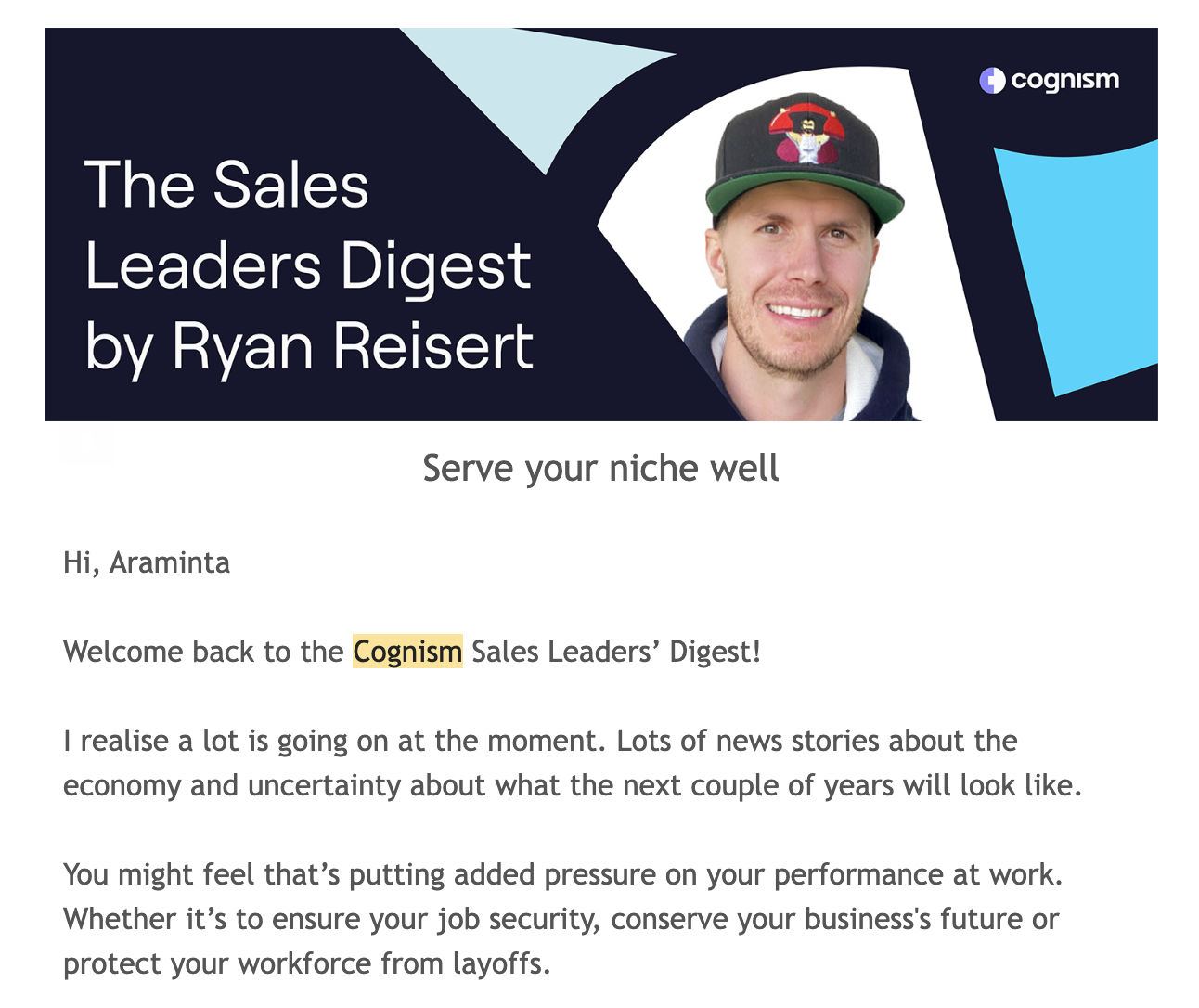
They have different people in different departments who send out newsletter-like emails every 2 weeks packed with useful, actionable information.
Events and speaking
In certain B2B areas, sponsoring, speaking or organising an event can help a lot with brand awareness, positioning as an expert and customer acquisition.
One company that’s been doing this very well is LendInvest in the UK.
They host events in London, with an attendance of over 50 people. They’ve hosted and spoken at events on:
They allow others to host events in their office space, which also helps with brand awareness and hiring.
Although they haven’t shared how the events are going and the results they’re getting, the fact that they’ve been doing them since 2016 is a good way to demonstrate their effectiveness.
If you’re looking for a list of fintech events to attend in 2023, check out this website: Fintech Events
Partnership marketing
Partnership marketing can be one of the highest ROI marketing tactics specifically for B2B fintechs. Why? Because partnerships are an inherent part of that fintech model. By making use of Open Banking and partnering up, fintechs increase the value of the services they offer.
Partnership marketing basically involves partnering with another company in a way that benefits both parties. The partnership could focus on improving a product through collaboration, releasing a joint venture, or agreeing on a distribution deal. Since Fintechs work with open platforms and APIs, finding partners may be easier than in other industries.
We recently interviewed Yvette Edsall, COO at Fintel Connect, on all things partnership marketing:
The main thing to note is that it’s important that partnerships are not created for the sake of a partnership. That means that there should be a specific goal, and both partners should know why they want to work with each other.
As mentioned before, B2B Fintechs have partnerships in their blood, so there are tons of examples of B2B fintechs implementing business development. Here are a few:
- Onfido with Revolut
- TrueLayer with Zopa
- Square with Xero
- Klarna with Adyen
Podcast
More fintech companies are starting podcasts as well as sponsoring them. In an interview with the demand generation manager at Railz, Nabi says that sponsoring a data science podcast generated a high number of leads.
Community
More and more people are looking to set up or organise a community for their company. This could be a Slack group, or an in-person event or some type of forum.
We, for example, run a fintech marketing Slack group with over 1,000 members now. It’s a great place to exchange ideas, ask people what they’re thinking and look for inspiration.
But we’re not the only ones who have done it. Moov, a payments infrastructure company, also has a Slack group with over 8,000 members. There are discussions in there all day about specific tech issues people might be facing.
And many other fintech companies have Slack groups as well.
B2B fintech companies need marketing now more than ever. The industry is getting more competitive and everyone wants to position themselves as the expert.
And yet, it’s not possible to be the expert without sharing knowledge and expertise – and that’s where marketing comes in. If you’re aiming to be profitable, reduce CAC and become a leader in the field, then owning marketing and doing it properly will take things to another level.
If you’re interested in learning about how to do content for B2B fintech content marketing more properly, read more about how we’ve helped fintech companies get customers with content.





